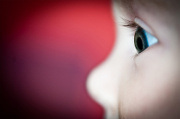Hallucinating children
 I’ve got an article in The Observer about childhood hallucinations which are much more common than we previously imagined.
I’ve got an article in The Observer about childhood hallucinations which are much more common than we previously imagined.
You tend to get one of two reactions when you discuss children hallucination: that’s obvious – children live in a fantasy world, or that’s horrendous – there must be something very wrong with them.
The answer is that neither response is particularly accurate. Children’s fantasies are not the same as hallucinations but neither are they normally a sign of something ‘going wrong’ – although certain forms of hallucinations can suggest a more serious problem.
Hallucinations often reflect a bizarre, blurry version of our realities and because play is an everyday reality for children, the content can seem similar. Both can contain quirky characters, strange scenarios and inspire curious behaviour. One child described how he saw a wolf in the house, another that he had “Yahoos” living inside him that ate all his medicine. On the surface, these could just as easily be a child’s whimsy, but genuine hallucinations have a very different flavour. “In play and make-believe, children are imagining,” says Elena Garralda, a professor of child and adolescent psychiatry at Imperial College London. “They do not have the actual perceptual experience of seeing and hearing.” Another key difference, notes Garralda, is that “hallucinations feel imposed and children cannot exercise a direct control over them”.
There’s more on these fascinating experiences in the full article linked below.
Link to ‘Childhood hallucinations are surprisingly common – but why?’


Tom Stafford's Blog
- Tom Stafford's profile
- 13 followers



